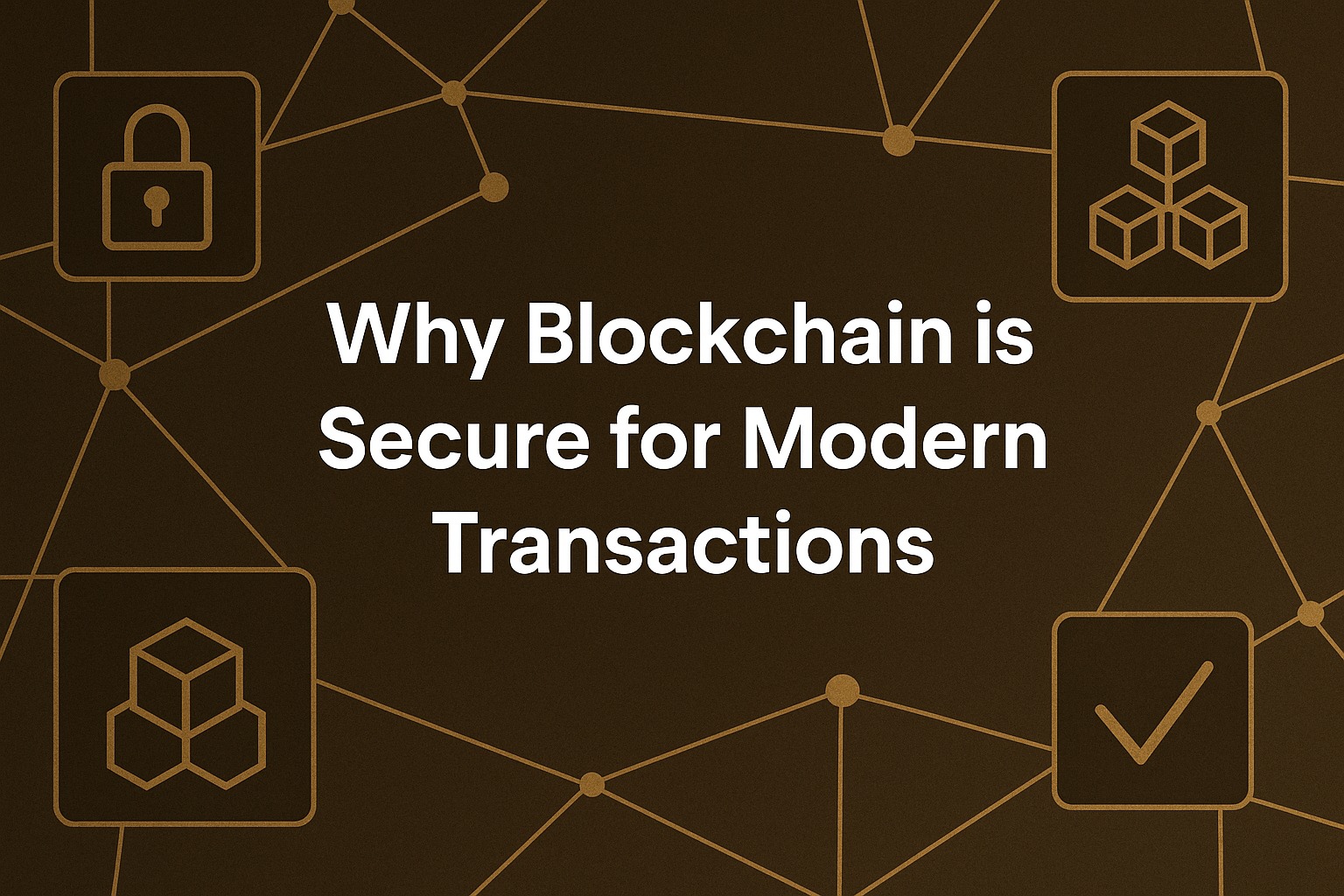In today’s digital economy, people send money, sign contracts, and exchange data online every second. But digital transactions face a big question: can we really trust them? Traditional systems rely on banks, middlemen, or governments to guarantee safety. Blockchain flips that model by offering a system that is transparent, tamper-resistant, and decentralized. This article explores why blockchain security makes modern transactions safer, how it works, and what risks remain.
What Makes Blockchain Secure?
Blockchain combines three key features:
- Cryptography – Every transaction is encrypted and linked using advanced algorithms.
- Consensus Mechanisms – Networks agree on valid transactions through methods like Proof of Work or Proof of Stake.
- Immutability – Once added, blocks cannot easily be changed, making records permanent.
Together, these features create a digital ledger that is both transparent and resilient.
Cryptographic Security
At the heart of blockchain is cryptography. It ensures that:
- Only the holder of a private key can authorize a transaction.
- Public keys act like digital addresses, visible but secure.
- Digital signatures verify authenticity.
This design prevents fraud and forgery, making blockchain secure against most traditional cyberattacks.
Consensus Mechanisms
Blockchain doesn’t rely on a single authority. Instead, it uses consensus models:
- Proof of Work (PoW): Miners solve puzzles to validate transactions. This is energy-intensive but secure.
- Proof of Stake (PoS): Validators stake coins to confirm blocks. This saves energy and reduces centralization risks.
- Other Models: New systems like Delegated Proof of Stake (DPoS) and Byzantine Fault Tolerance add flexibility.
Consensus ensures that no single entity controls the network.
Transparency and Immutability
Every blockchain transaction is public and permanent. Once recorded:
- It cannot be altered without network approval.
- Fraudulent changes would require controlling most of the network, almost impossible on large chains.
This immutability is what makes blockchain trusted for modern transactions.
Why Blockchain Security Matters for Users
- Financial Safety: Reduces fraud by securing digital payments.
- Data Integrity: Ensures that medical records, contracts, or votes cannot be tampered with.
- Trust Without Middlemen: Users don’t need banks or third parties to confirm transactions.
Real-World Applications of Blockchain Security
- Finance: Payments, stablecoins, and DeFi platforms use blockchain for secure transfers.
- Healthcare: Patient records are stored securely and transparently.
- Supply Chains: Blockchain verifies product authenticity.
- Voting: Pilot projects use blockchain to ensure tamper-proof election results.
Remaining Risks in Blockchain Security
Blockchain is secure, but not perfect:
- User Errors: Lost private keys mean lost funds.
- Phishing Scams: Hackers trick users into revealing keys.
- Smart Contract Bugs: Flaws in code can be exploited.
- 51% Attacks: Small networks risk takeover by bad actors.
Education and better tools reduce these risks.
How Visualization Tools Enhance Security
Hindsight VIP’s Visual Explorer adds another layer of safety by showing:
- Wallet addresses as shapes.
- Suspicious flows in red.
- Verified accounts in green.
Visualization makes blockchain security easier to understand at a glance.
The Future of Blockchain Security
- AI-Powered Monitoring: Automated fraud detection.
- Cross-Chain Security: Protecting assets across multiple blockchains.
- User-Friendly Interfaces: Making security accessible to beginners.
Conclusion: Why Blockchain Is Secure
Blockchain is not invulnerable, but it is significantly more secure than traditional systems. With cryptography, consensus, and immutability, it builds trust without central authorities. For modern transactions, from payments to healthcare, blockchain security is reshaping how we protect value and data.
By combining blockchain’s built-in protections with tools like Hindsight VIP’s Visual Explorer, users can transact with confidence in the digital economy.
